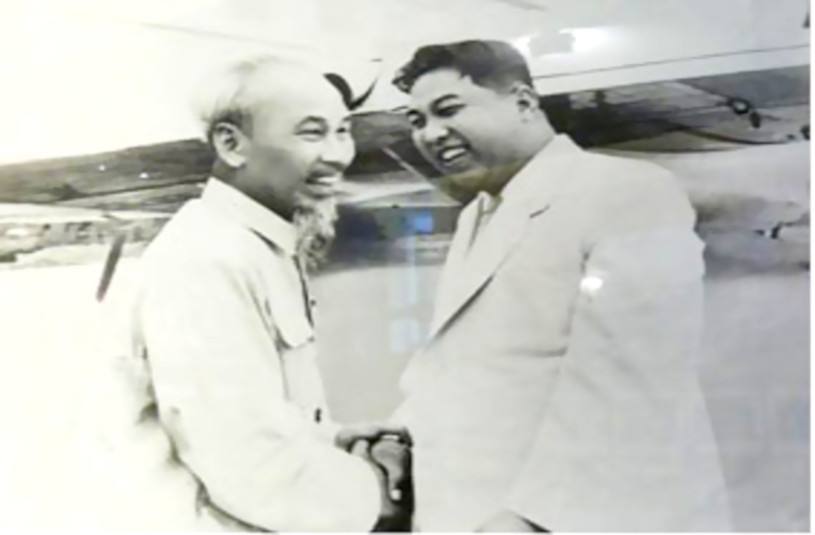When it comes to opening up socialist countries — either economically, or touristically — the notion of the “Vietnam Model” is often mentioned. Therefore North Korea could take the Vietnam route and still survive?
Vietnam has managed to keep its one-party system, but has visa-free, or visa on arrival, for most countries and welcomed 18 million visitors in 2019.
What can North Korea learn from Vietnam — or China, Laos and even Cuba — when it comes to opening up for tourists?
The South-East Asian model

In terms of tourism, the socialist countries of South-East Asia, which includes Vietnam, Laos and to an extent Cambodia have all followed fairly similar routes.
All went through devastating wars and were part of the Eastern Bloc — and largely closed to tourists — until the winds of change of glasnost blew away Soviet subsidies.
First, we will analyse the Vietnamese experience, as a delegation from the North Korean tourism authority visited in 2019 to learn about their experience.
Vietnam opened to tourism right after the Vietnam War, but visas were hard to come by and tended to be granted for fraternal socialist nations, at least until 1986 and “Doi Moi”.
However, the boom of Vietnamese tourism did not come until 1993 and there are a number of potential steps North Korea could take to get here. A first start would be to ease the guided tour element.
So, how could North Korea allow people to travel unguided, or at least less guided? While this seems far fetched as of now, it already happens to an extent in Rason.
In this Special Economic Zone people can travel relatively independently, using their own vehicle, and choosing their own hotels and restaurants, where cash is paid, rather than being part of a package. And while guides are around, changing the itinerary or visiting places, ad-hoc is possible.
North Korea could initially do this on the “mainland” by implementing less restrictive guided tours, such as happen in Syria, Tibet or Iran. In these countries while tours are guided, stops are much easier, people can walk around shops and choose their own bars and restaurants.
Guests are also allowed to leave their hotel at night without a guide.
Were North Korea to adopt a more relaxed policy, not much would would actually change, but it could act as a litmus test for moving to the next stage — fully unguided tours.
How could people travel freely in the DPRK?

So, while phase one would be loosening the strictness of group tours and allowing people more freedom to do things independently, phase two would be more akin to Vietnam from 1986-93, when westerners started to return, but the visa was not all that easy to arrange.
In this instance people applying for an “independent tour” to North Korea would be required to not only apply for a visa, but show proof of hotel bookings (which could be done through agents), as well as their itinerary for the duration of their stay.
Another caveat to this would be that the government could also require internal transport to be booked via an agent/the government as well, rather than again being a free for all.
This would allow two important things — first, while tourists would be free to travel without a guide, they would be restricted to cities, or areas deemed “open”, while also having their stays at government hotels, as well as their transport done via authorised government means. Again this would be limited free travel, rather than allowing backpackers to enter en-masse.
Second, and perhaps more importantly, through the visa process the government could limit the number of visas issued, something which could be increased each year if the programme proved successful.
Easing of visa and travel restrictions
The Vietnamese tourism boom began in 1993 and grew rapidly until Covid-19 hit.
For the DPRK to emulate this, they could adopt the global norm and award visas based on nationality. This would not be a new thing, for a long time Malaysians could enter North Korea visa free, but this ended when diplomatic relations soured.
The DPRK could start with a few select countries, probably “friendly” socialist countries, such as China, Laos and Vietnam.
Should this prove a success, North Korea could try such things as visa-on-arrival, e-visas, or visa-free entry for citizens of western countries.
The infrastructure bottleneck of North Korean tourism
And this is where Vietnam and China models present a problem with regards to our North Korean model. The opening of tourism in both countries came hand in hand with an widespread economic opening, with private hotels, hostels, guesthouses and restaurants proliferating.
For this North Korea would have two options, the Asian or the Cuban route. The Asian route would probably resemble Laos more than any other country, with foreign businesses or franchises playing a much smaller role than in China or Vietnam.
Some friendly countries, such as China, could be allowed to build private hotels and casinos (as they have done in Rason) or entrepreneurial locals could be allowed to either set up independently or in partnership with he government.
Then there’s the option of going down the same route as Cuba. Cuba opened to tourism in the 1990s, but fully owned foreign hotels, or restaurants were not allowed, only joint-ventures. These catered for all inclusive tourists, but not the lower end of the market.
This instead was filled by the “Casa Partcular” whereby private citizens (with a licence) opened their homes to paying guests, with the government taking a healthy cut via taxation.
This would be much harder to do than in Cuba as most people live in apartments in Pyongyang rather than houses, often with there not being anything resembling a spare room. The concept though is far from foreign with the Mount Chilbo Homestay being proof of what can be achieved where there is the will.

